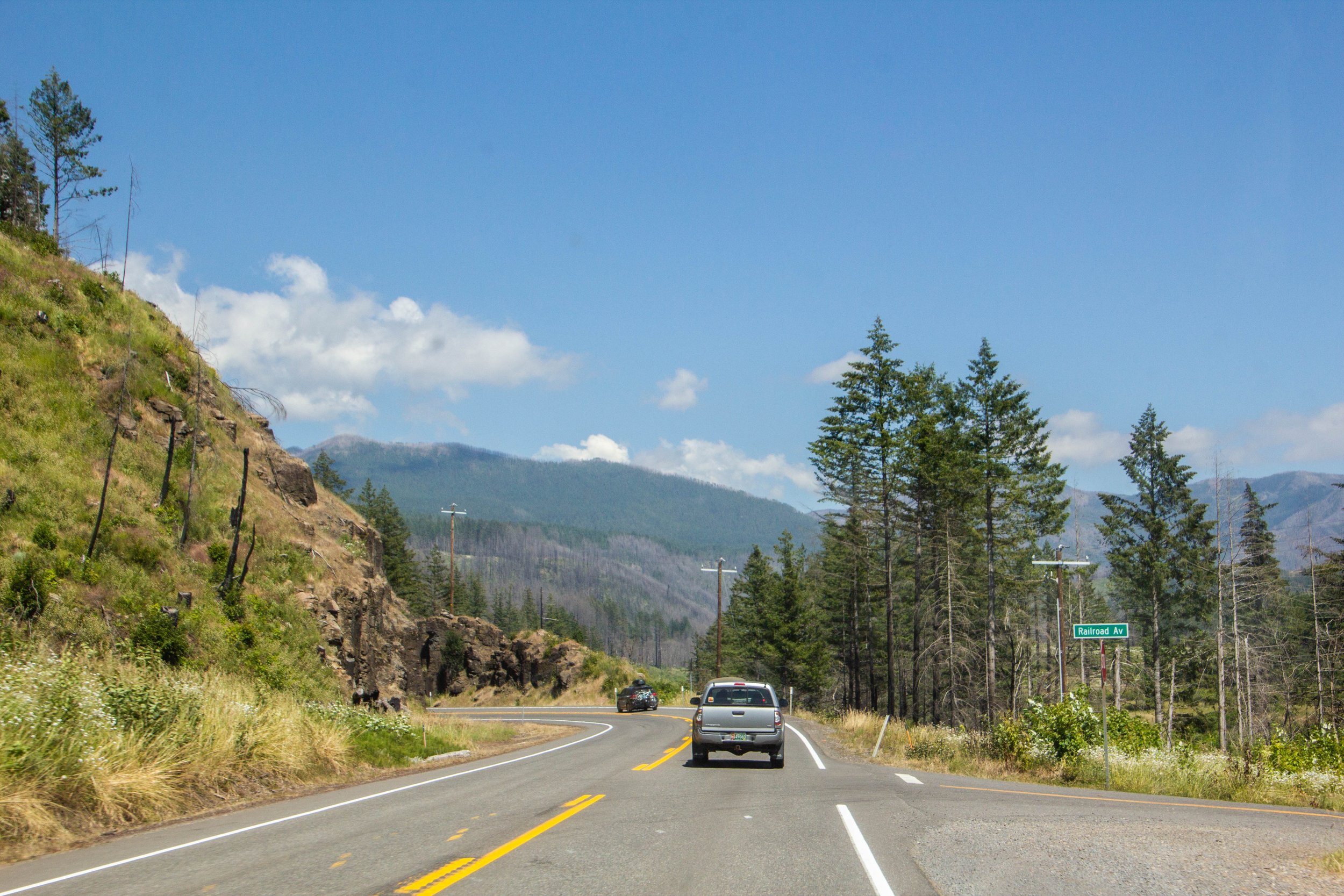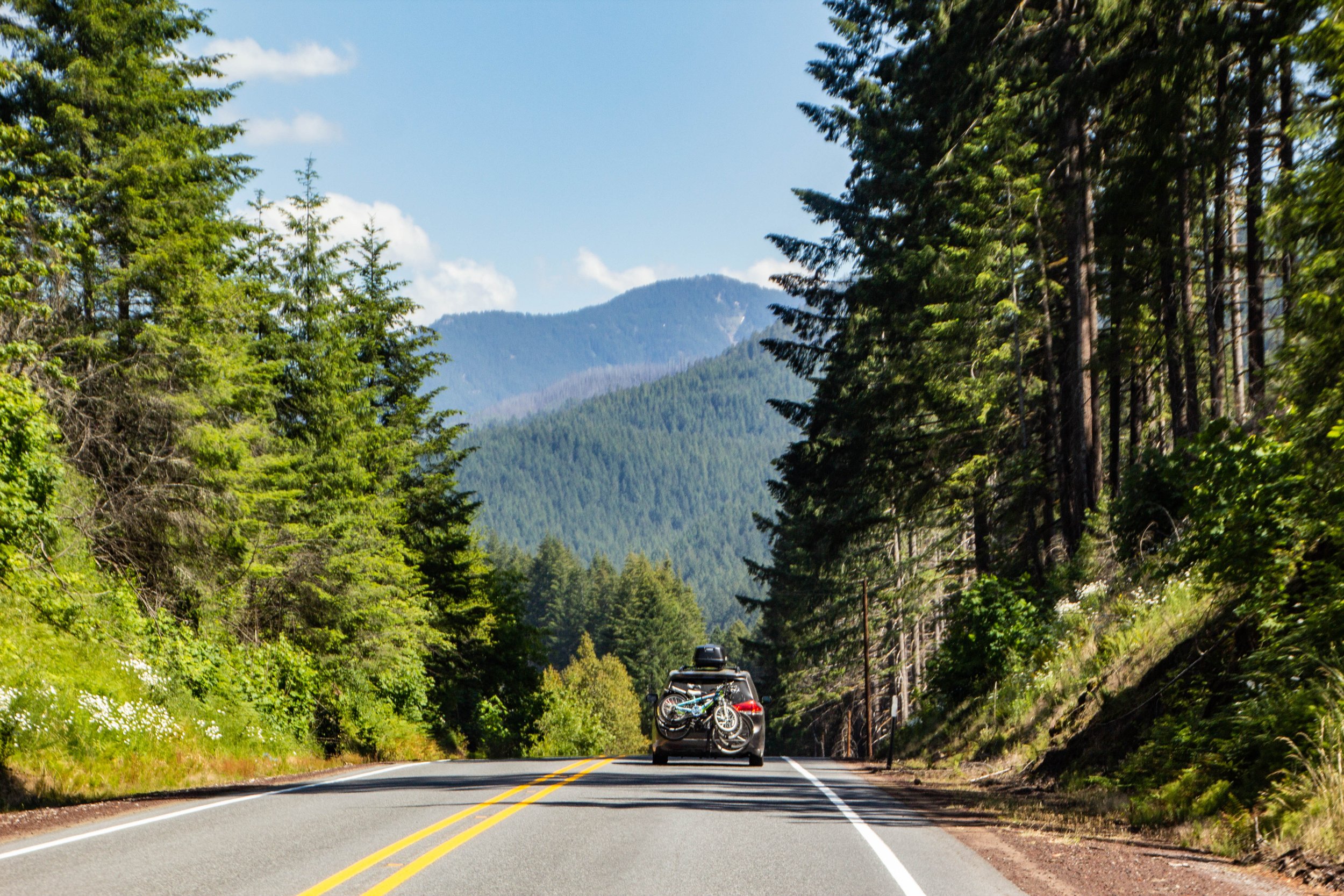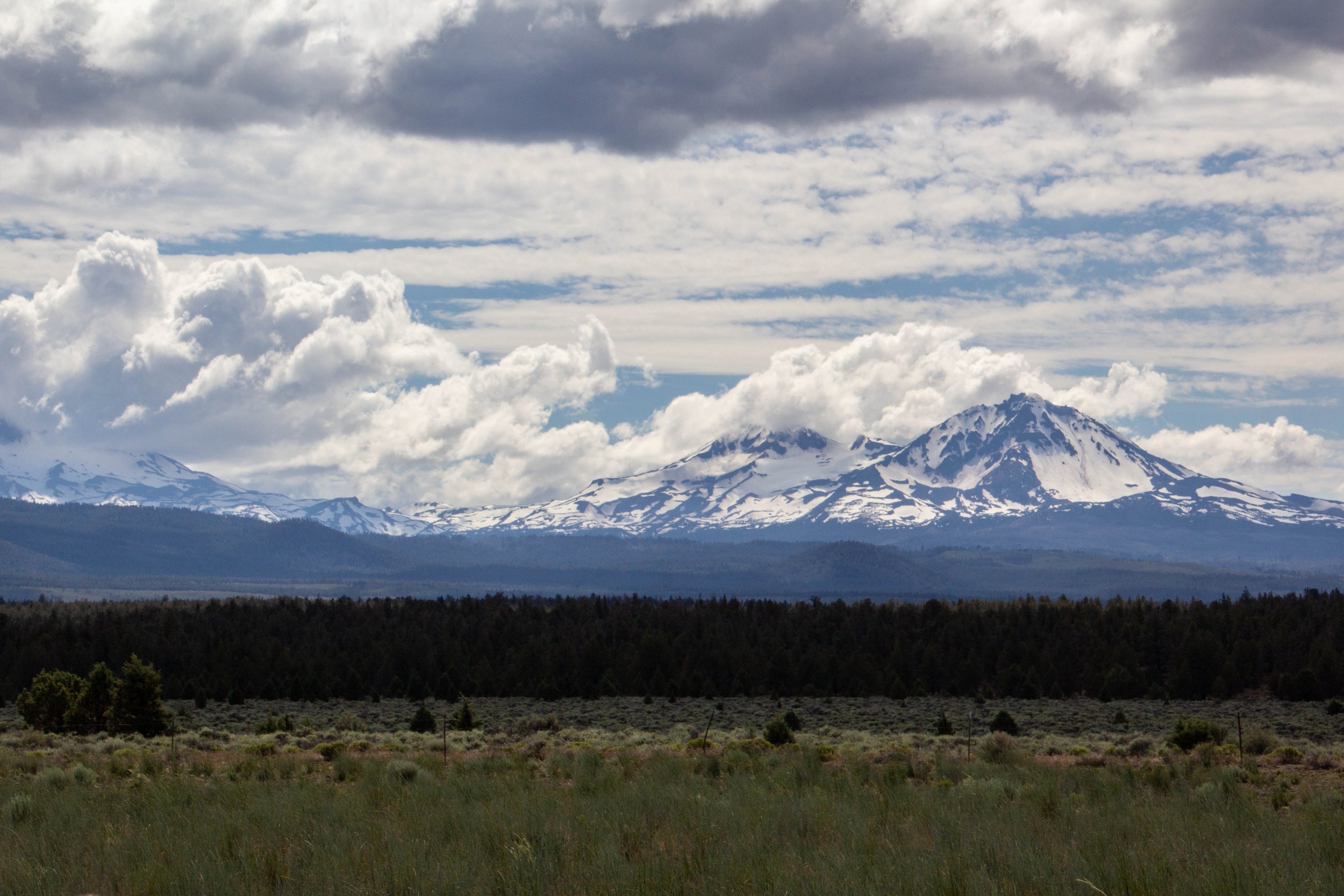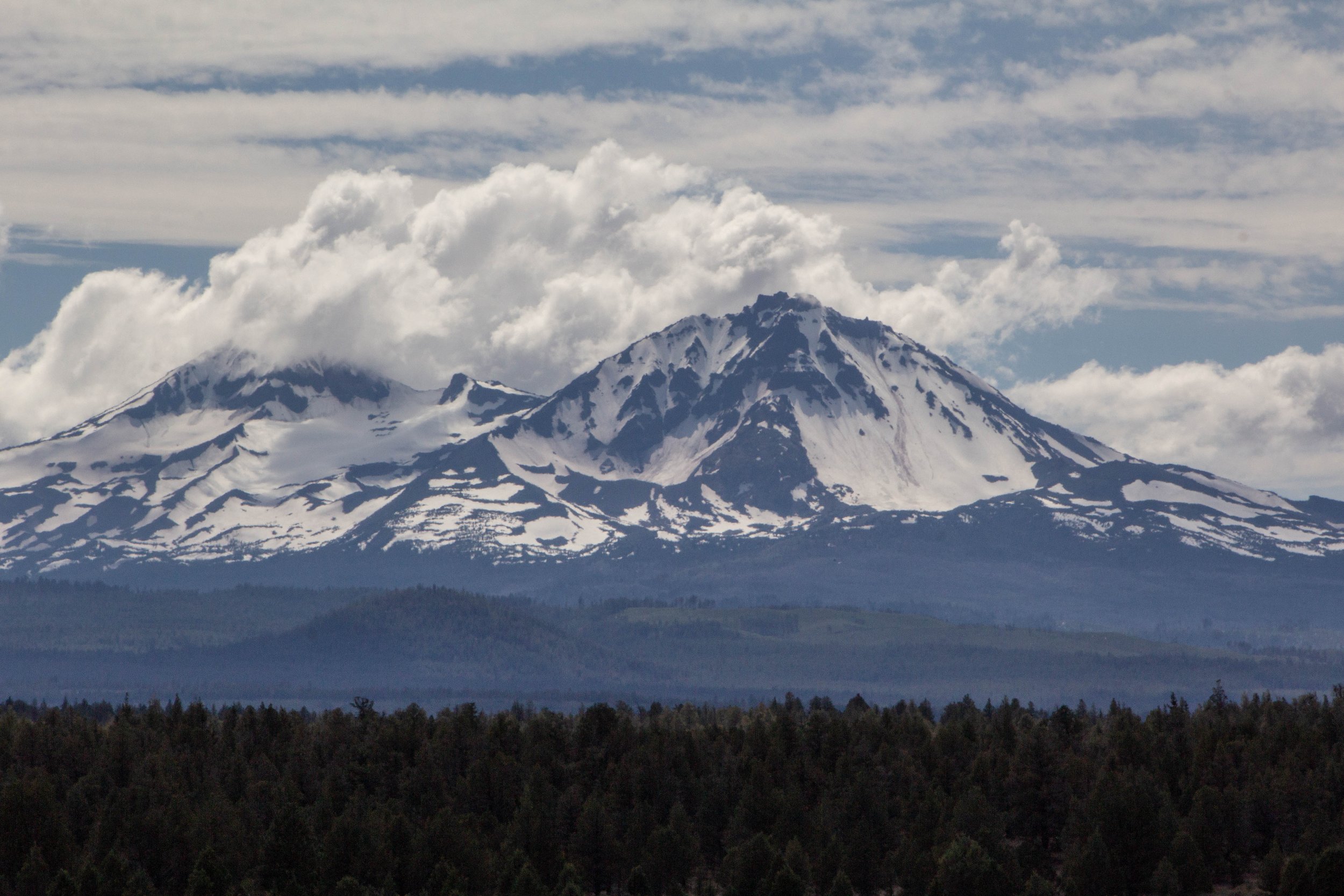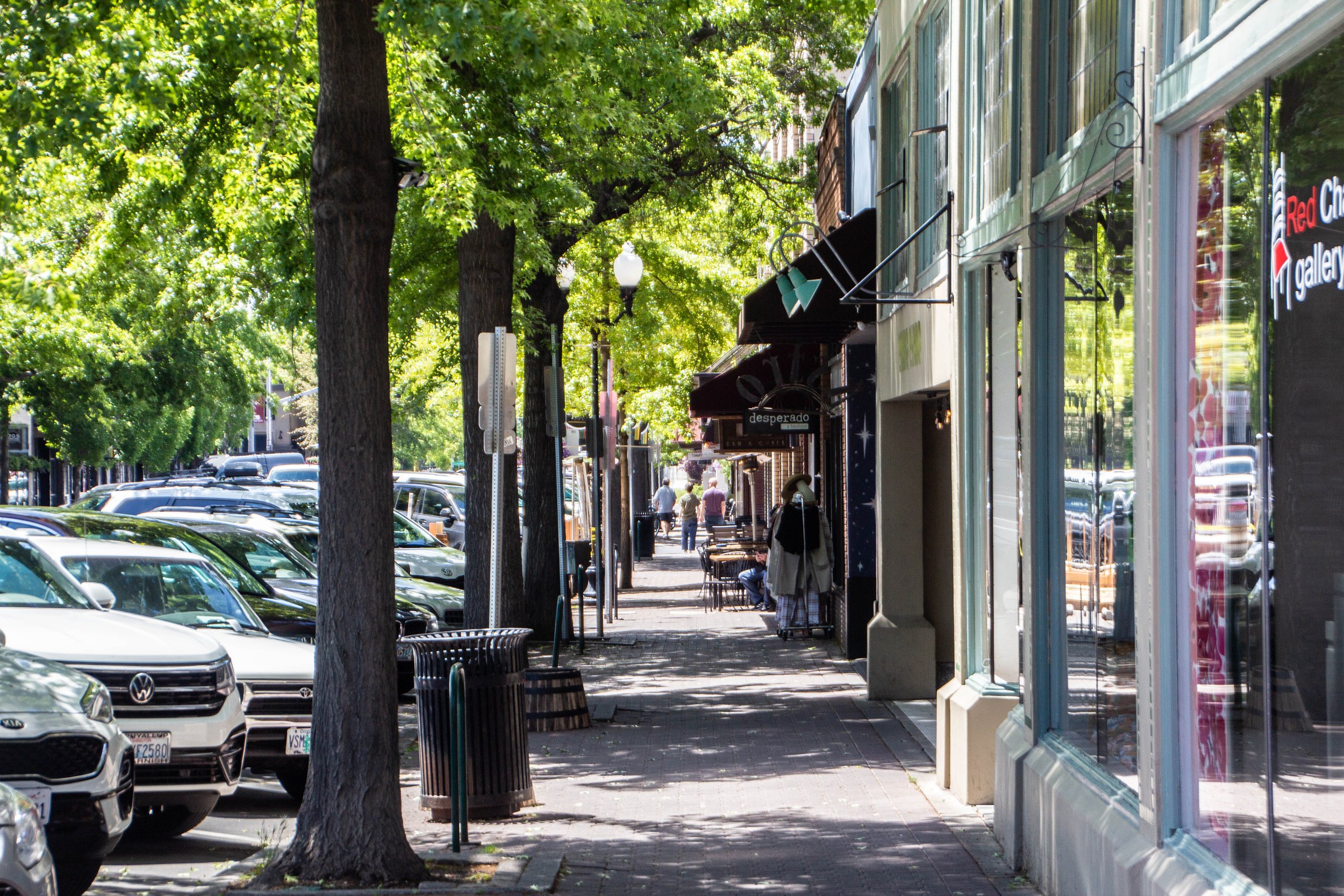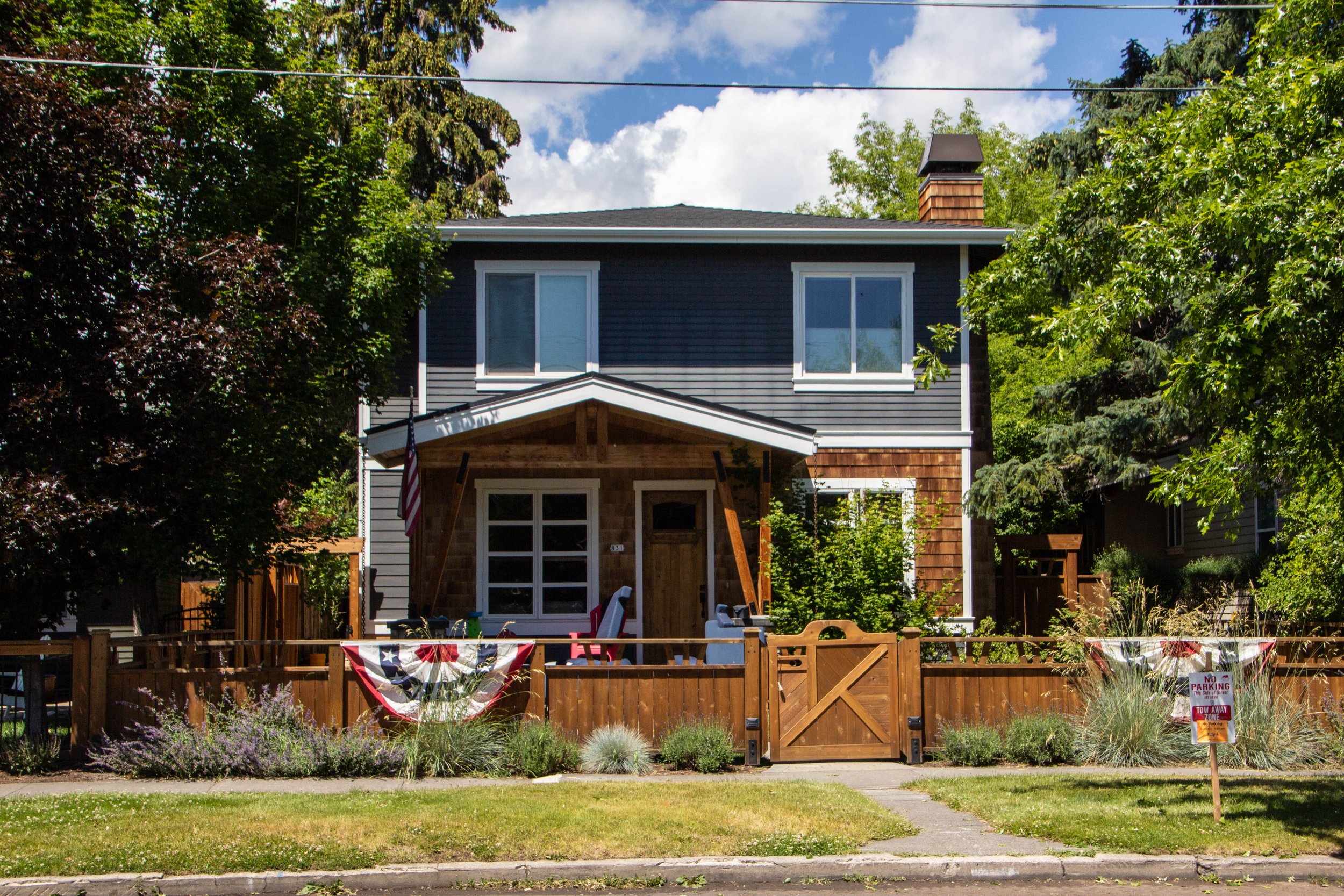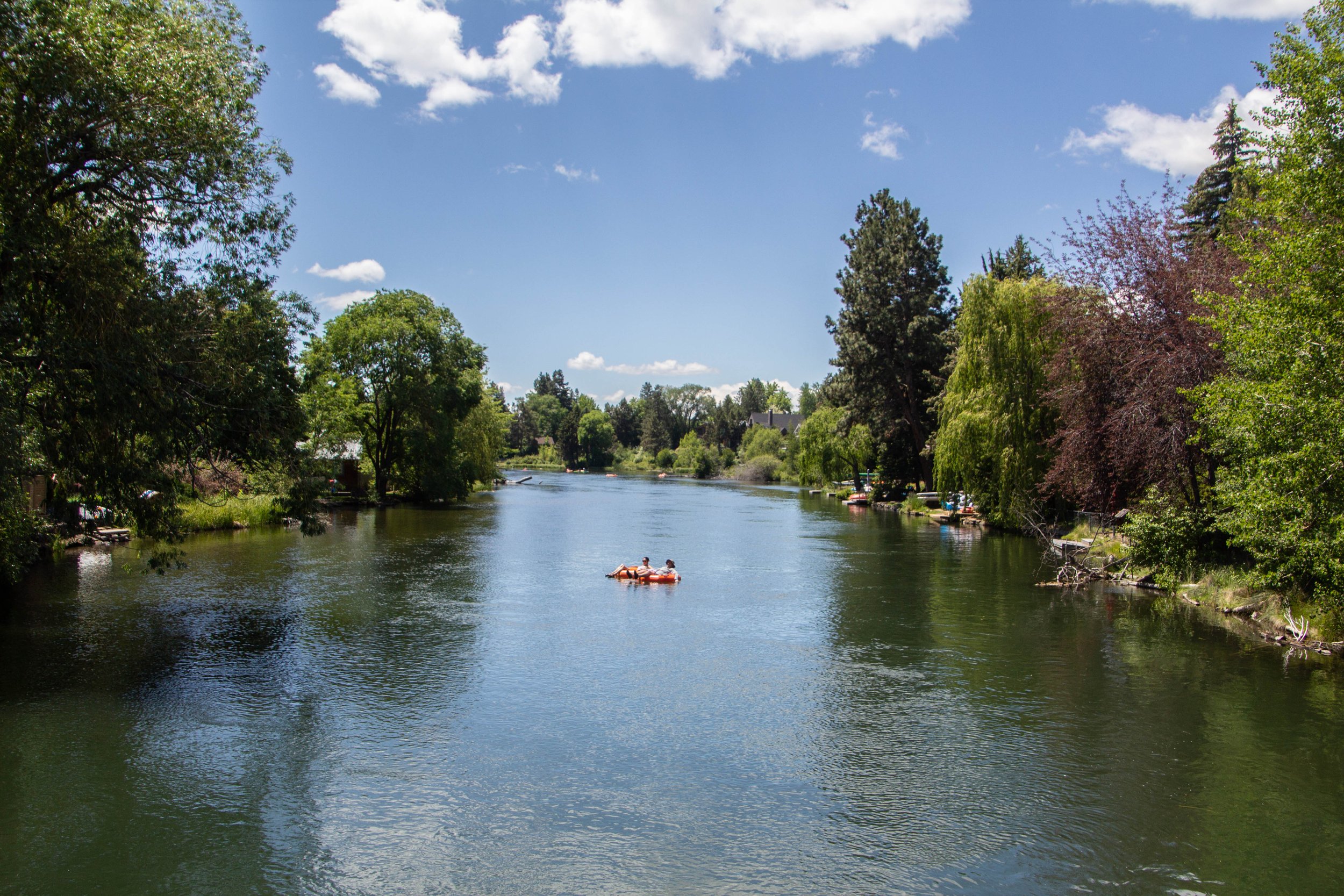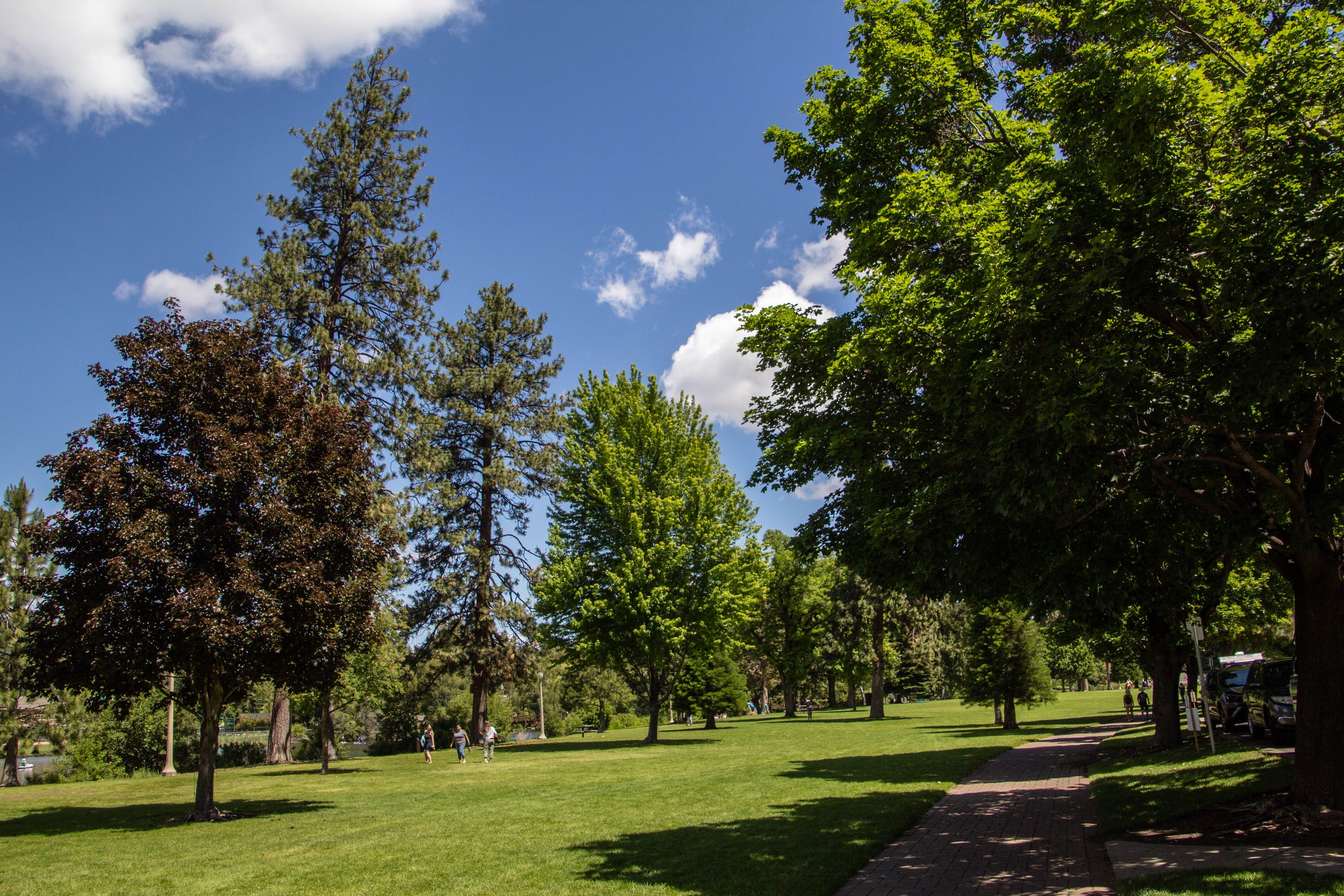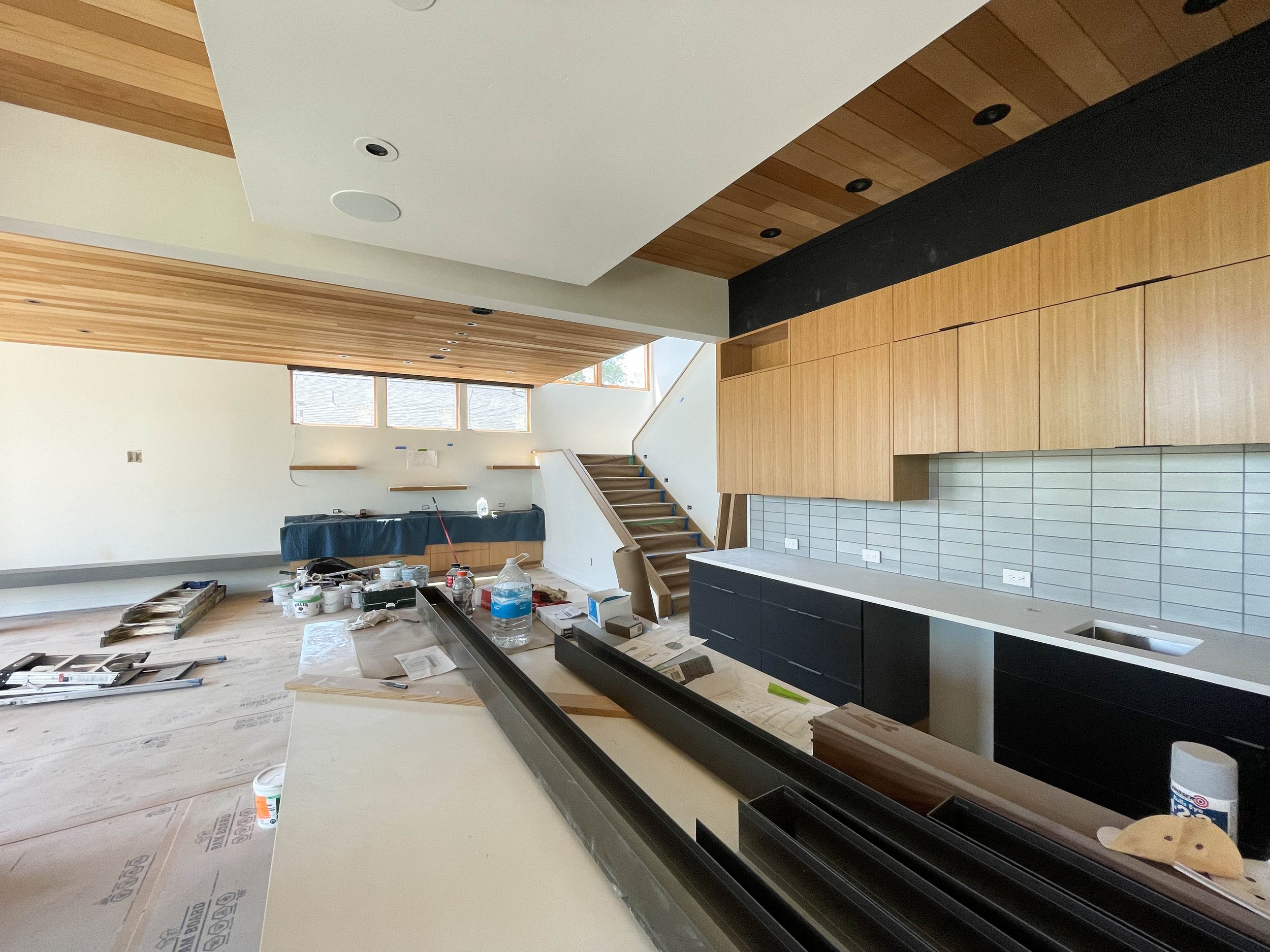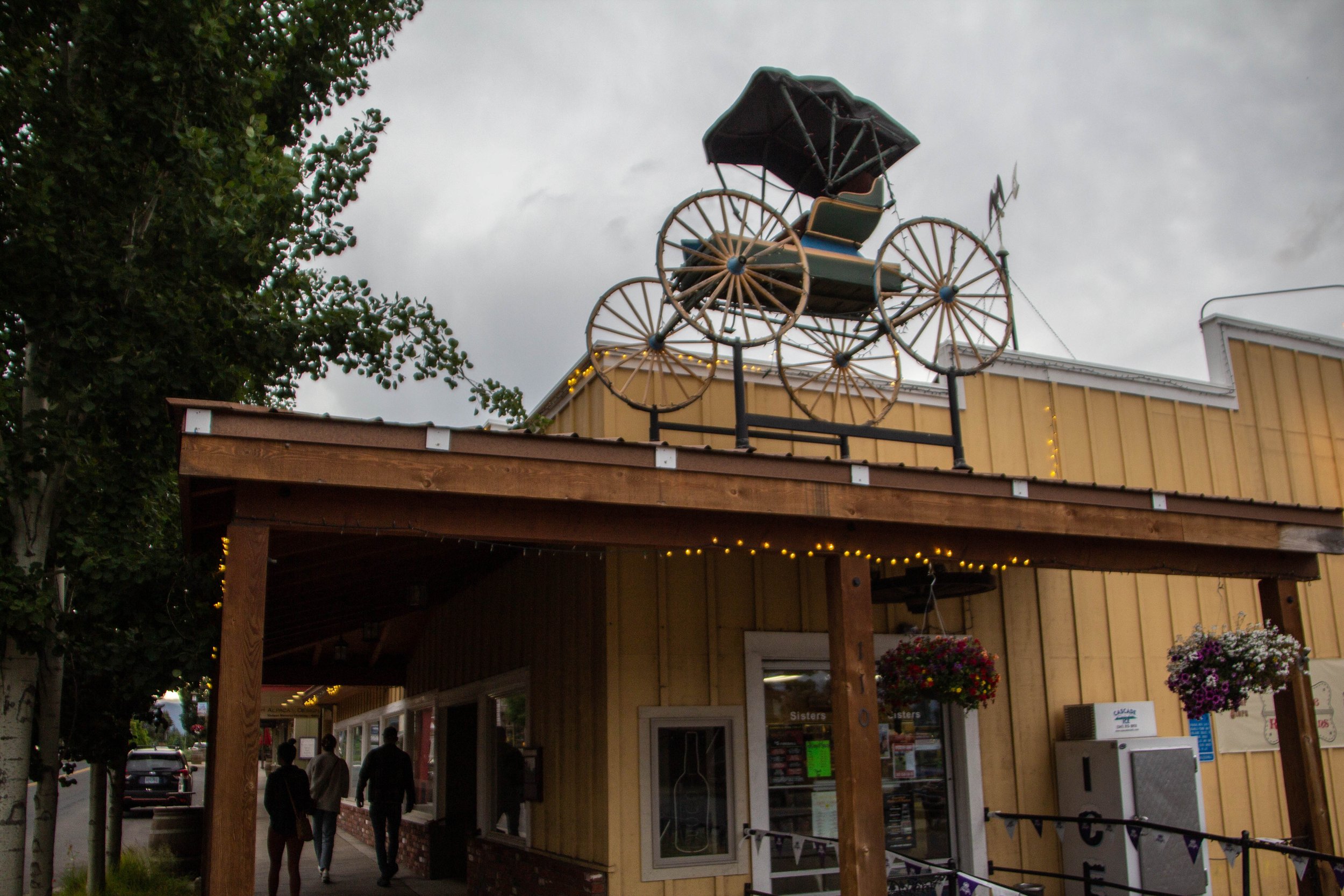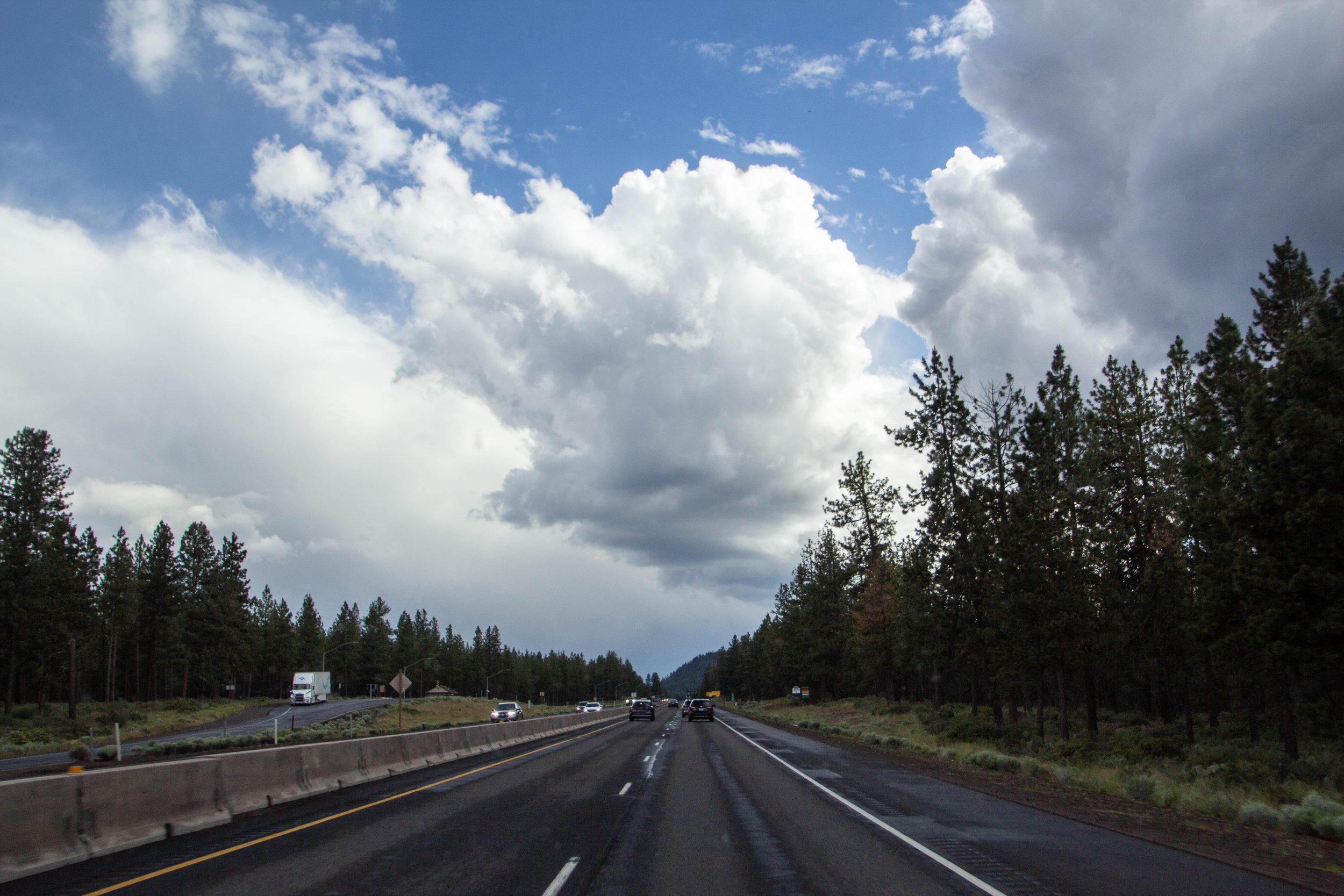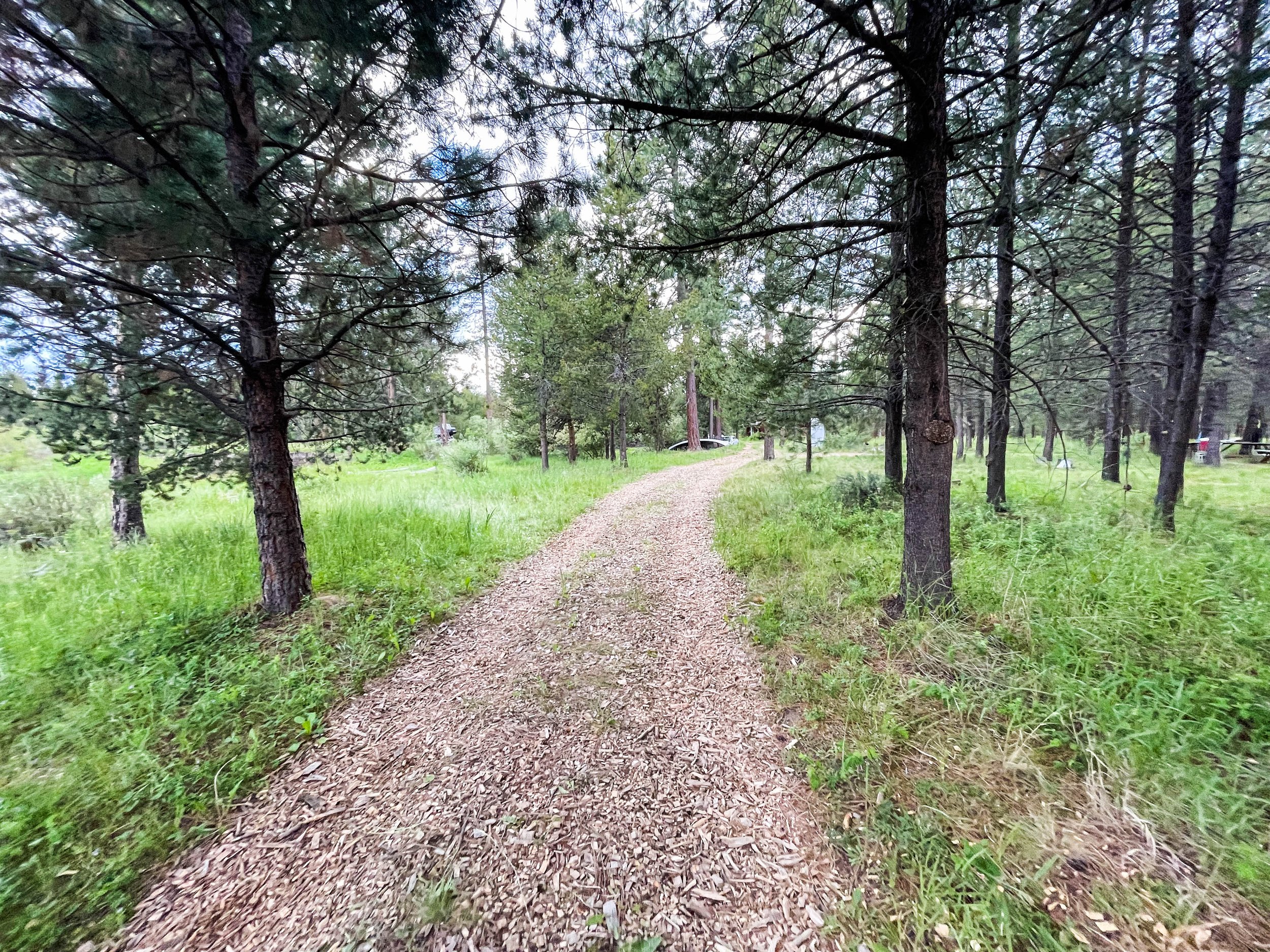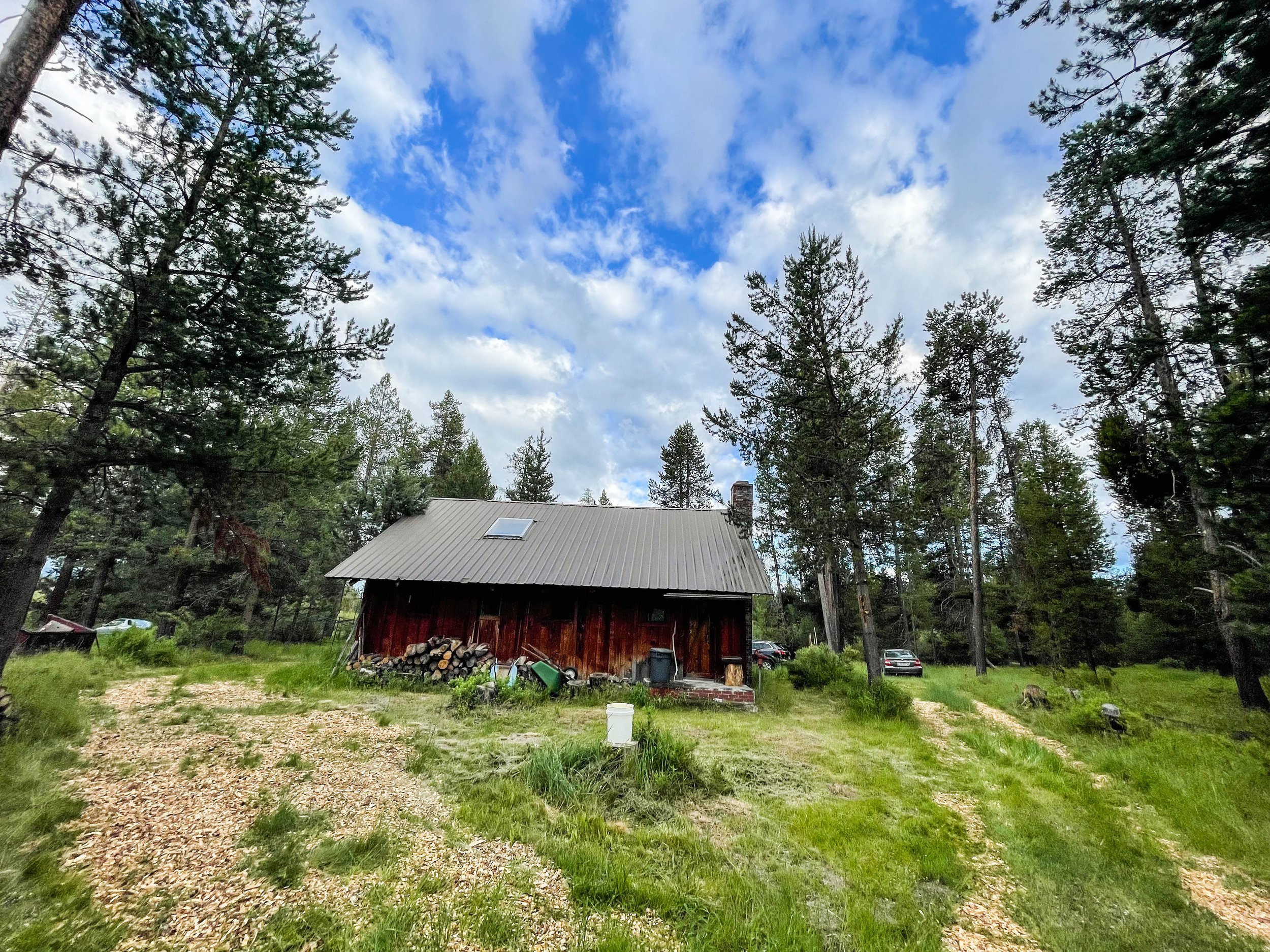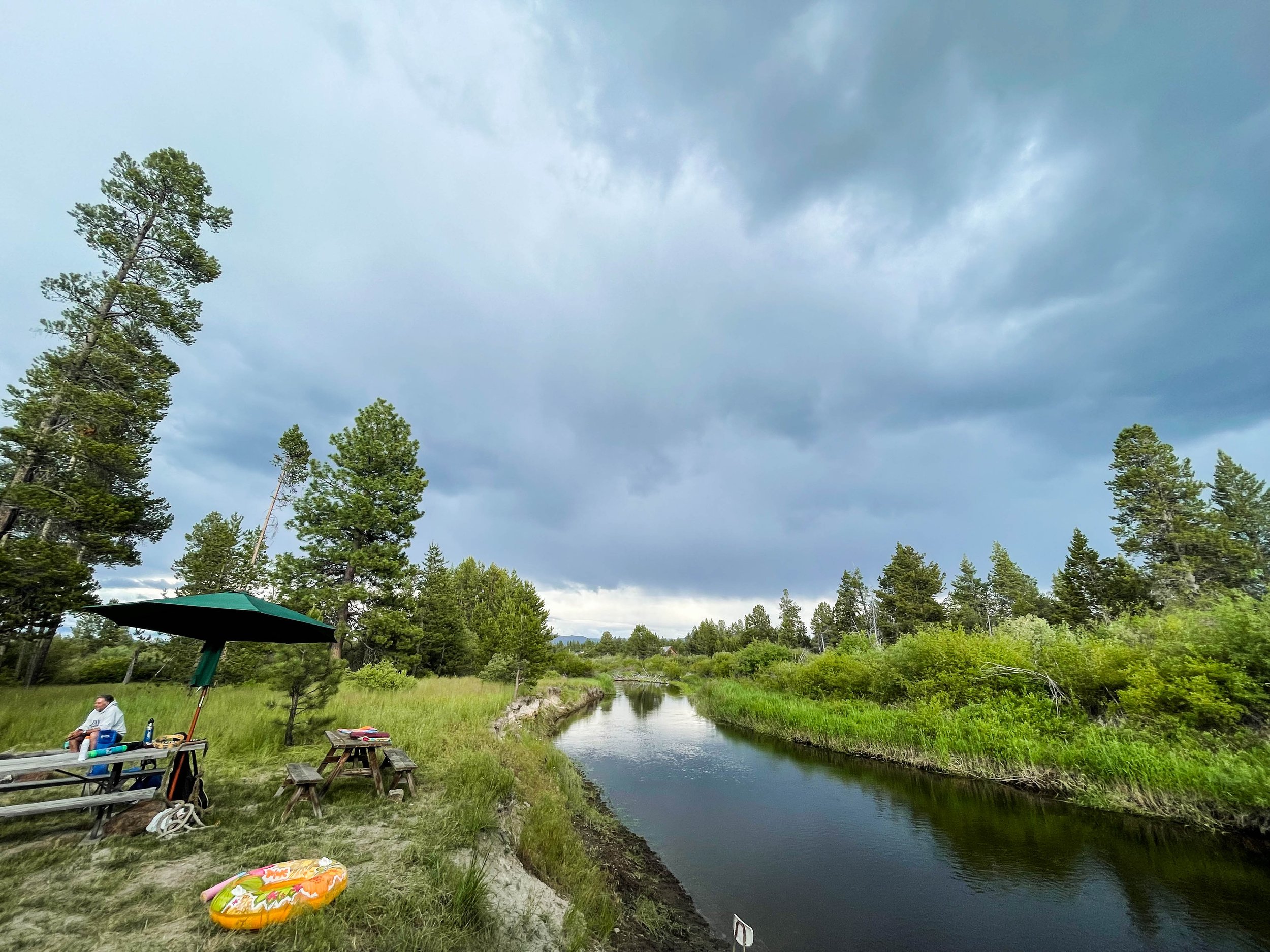Today we’re going to drive east out of Portland, cross the Cascades mountain range, and enter into an entirely different type of environment, hitherto unbeknownst to me. It’s known as the “high desert” and it’s pretty much the opposite of the lush greenery with which the Pacific Northwest is most often associated. But before we get to that, we’ve got some driving to do. And before we can get out onto the open road, we need to sit in Portland traffic. And before we make much progress in that traffic… well, I just want to give a big shout-out to my main man Buddy not only for hosting me on this trip and showing me around the Bend/Sisters area, but also for waiting outside a random gas station for 45 minutes while I wrote the prologue to this piece, which is entitled “Peter Dies of Dysentery on the Oregon Trail.”
And we’re back.
One thing I want to say upfront—which will become clear over the course of this series—is that Oregon is one of the most geographically diverse states in the U.S. It’s got everything: volcanoes, lava beds, lakes, beaches, rugged rocky coastline, winelands, dense evergreen forests, other more varied types of forest, and—once you cross over the Cascades mountain range—high deserts, and semi-arid shrublands. Here’s a crazy fact that I learned on Wikipedia when I was reading up on Oregon: apparently one of Oregon’s forests contains the largest organism in the WORLD. It’s a giant fungus that spans almost 3.5 square miles! Just sit with that knowledge for a minute. 😶
Anyway, I had personally only ever really pictured the iconic PNW lush, dense forests when I thought about Oregon, but by the time we made it across the Cascades, I knew better. My most immediate revelation from this drive was that Oregon has a LOT of wildfires. This might sound naive, but I had mostly just associated wildfires with California. However, over the course of my travels around the American West these past 2 years, I have been learning that wildfires are a concern pretty much everywhere, from Colorado to British Columbia. Driving over the Cascadian wilderness, we saw many areas where what had once been lush pine forest was now a field of charred telephone poles. To some extent, I think this has always been part of the circle of life out here so this legitimately is part of the “classic” Oregon vibe. For that reason, I will spare you the climate change doom & gloom (this time), but climate change really is a major factor out here. Anyway, here are some pictures from the passenger seat as we drove over Oregon’s own mini-continental divide.
Central Oregon’s High Desert
By the time we got to the other side of these mountains, we were clearly in a very different type of climate. The forests whizzing by on either side of our vehicle no longer consisted of the lush greenery we had seen on our way out of Multnomah County, but instead became dry, arid, and piney. It really was a new environment for me. I don’t think I’ve ever been somewhere quite like this. The forests consisted of western juniper and pine trees, while big sagebrush and common woolly sunflower populated the empty spaces in between these gentle giants, often amidst a bed of brown, dry pine needles. It was really quite enchanting… and also made it abundantly clear why this region is so prone to wildfires. A lot of these forests that hadn’t already sustained some burns in the recent past felt like a tinder box.
Making our way out of the Cascades, winding through these forests was very cool, but to really understand why this region is so jaw-droppingly gorgeous, you have to zoom out. I don’t know what I expected to find out here, but it sure as hell was not a bunch of majestic snow-capped mountains! I had heard of the “3 Sisters” mountains before, but I had no idea just how large they loom over this area. Also, they’re not alone. There are a whole bunch of other peaks around them that make Central Oregon feel like a high-altitude fortress. THIS is where the Wild West still exists. Eastern Oregon/Washington, Northern Nevada, Idaho, Montana… there’s a whole lot of empty space out here. As somebody who has never lived west of the Mississippi River, it kind of blows my mind that all of this exists in the same country I live in. In the next 2 articles, we are going to get out into these mountains, so I am not going to explain much more of this right now. For now, the following gallery will have to be as mysterious to you as it was to me when I first arrived here.
Bend, Oregon: An Introduction
The only place in this region that I can count on people unfamiliar with the “Wild West” reliably having heard of… is Bend. People don’t always know much about it, but there seems to be a general awareness that Bend is (1) a charming little town, and (2) a great gateway to all things ‘outdoorsy’. Indeed, Bend’s stock has been on the rise recently. Between 2000 and 2020, the population of Bend proper almost doubled. Today the Bend metro area has a population of about 200,000. So, by most conventional metrics it’s a pretty small place… but once you actually visit Central Oregon, it’s surprising that even that many people live out here. It’s such a big space that you’d need many millions of people out here for it to start to feel crowded. Can the dry, fire-prone Central Oregon desert sustain that many people? I doubt it, but from the outside looking in, Bend seems like it’s still got plenty of potential for growth.
The Deschutes River flows through the center of Bend, lending the central areas of town a much more verdant color palette than most of its surroundings. We started our exploration of Bend with a walk through Drake Park, along the banks of the Deschutes. From there it was an easy walk through downtown Bend and through some of Bend’s idyllic neighborhoods. Downtown Bend feels similar to many small but pricey towns you’ll find out west, from Boulder, Colorado to Calistoga, California. These are places that grew out of actual “Wild West” homesteads, and the old part of the city retains that feel even today. Boulder, I think, is an especially good comparison (minus the University). However, just as Boulder showcases some of the best of Colorado, Bend is uniquely Oregonian. It’s also brewery-paradise. I’m not drinking this year (and I don’t miss it), but seeing the Bendites enjoying these rustic beer gardens in the summer sun definitely made a nice IPA sound pretty damn appealing.
Leaving the city center, Bend quickly becomes quite suburban. There are plenty of cool breweries, restaurants, coffee shops, dispensaries, and outdoor outfitters to be found, but for the most part, it strikes me as a pretty peaceful place to live. There’s clearly a lot of money here, and likely below-average reason to lock one’s door at night. If you’re not somebody who appreciates the great outdoors, this would probably be a boring, albeit comfortable town. Luckily, we here at Peter’s Big Adventure (the whole staff, from HR to Finance) do not fall into this category. JK I have no staff. Here are some pics.
So, I mentioned that Bend is growing like crazy and that there is some money here. I feel like I am often in the position of writing about these kinds of economic forces in entirely abstract terms. But in Bend, I can actually show you a bit of what this looks like, thanks to my man on the inside: Buddy. He’s working as a contractor out here, specializing in carpentry in high-end houses in the greater Bend/Sisters area. It just so happened that one of the houses he was working on was easily walkable from Drake Park, so I got the tour. There are a lot of luxury houses in the works out here, many of which function as the 2nd home of wealthy folks in Seattle or San Francisco. This particular home was no exception, and even as a work in progress, it would still be the nicest place I have ever lived.
The Last Blockbuster on Planet Earth 😢 📼
Okay so here’s something random. Bend, Oregon is the home to the LAST Blockbuster still in business. The story is that when the Blockbuster “mothership” shuttered in 2014, it left 50 independent franchise locations still in operation. In 2019, this location in Bend became the sole survivor of that group. Dish Network, which owns the Blockbuster trademark, is no longer granting licenses for additional franchises, so the managers of this Bend branch have defacto-exclusive rights to continue operating under this name.
I feel like I barely noticed when these stores suddenly all disappeared, and in 2022/2023… it’s hard to believe there is still one left alive. But against all odds, this branch has never been more alive! They have ~4,000 active members and have actually become something of a curiosity / B-list tourist attraction. There is even a recent documentary called “The Last Blockbuster” focused on this very store, and now also a sitcom simply called “Blockbuster” that is set in a fictionalized version of—again—THIS VERY STORE. And those links are, ironically, for Netflix, the company that drove a stake into the heart of this once all-powerful corporation. There’s even a Wikipedia page specific to this place. Something about this feels kind of dystopian to me… like I am living in a flash-forward to a fictionalized version of the “distant future” in one of the movies I rented from Blockbuster in 2003. It’s like an episode of Futurama.
We put the address into Google Maps, and after a few minutes of driving—sure enough—there it was: The Last Blockbuster. I wondered if I was going to feel some powerful, overwhelming rush of nostalgia when I entered. I spent a lot of time in these stores as a kid in the late 90s/early 2000s. We walked in and—SURE ENOUGH—it’s a Blockbuster.
I’m not going to lie to you here: I felt nothing.
Sisters, Oregon + More From Central Oregon
Bend is a bit of an anomaly in Central Oregon. It’s far and away the biggest population center in this region, and the rest of the towns out here—though charming—are MUCH smaller. Sisters is one of a few different moons that are in the orbital of Bend. This is where I actually stayed during my trip. It’s nestled right up against the eastern side of the Cascades mountains, in the shadow of the 3 Sisters mountains. Honestly, this area is SO underhyped when it comes to the natural beauty that surrounds it. The location of Sisters is fucking incredible.
But what about the actual TOWN of Sisters? Well, it’s very small. It’s technically counted as part of Bend’s metro area population, but “Sisters proper” has got a population of just barely more than 3,000 people (as of 2021). The main drag of Sisters has clearly gone to great lengths to actively preserve the “Wild West” frontier town vibe as best they can. It’s a charming little stretch with a few bars, shops, restaurants, and breweries. It’s also got gas stations, grocery stores, etc. But I think most people who live in Sisters would be pretty upfront in telling you that, what this town actually looks like is a footnote in the grand scheme of things. It’s got lots of great real estate just like Bend does, but for the people who live in these houses, the town of Sisters is somewhat of a loose concept. Sure, all of their needs are met by the brick-and-mortar stores that make up this town, but when somebody says that they live in Sisters, what they really mean is that they live in a community of people located next to the “Three Sisters Wilderness.” Which is a helluva place to be. Here are a few shots from around the town of Sisters.
In the next 2 articles, we’ll be getting out into the Three Sisters Wilderness in earnest. I have been really excited to publish those articles because they are just so unreal in terms of natural beauty. But before we get there, I want to show you just slightly more of what life is like living in Central Oregon. It’s hard to fully explore life in these kinds of de-centralized rural-ish areas because any individual place you might visit feels so isolated and specific. We did a lot of driving around the Sisters/Bend area during this trip, as I think most residents do. Sisters is about 45 minutes outside of Bend, which to me—a city boy—sounds like a long way, but the scenery of this drive made it fly by every time I did it. I’m sure locals are immune to this if they do this drive every day but as an outsider, it was otherworldly.
Driving around this area, we got lots of glimpses into people’s Central Oregon hideaways. In terms of forestry management and wildfire risk mitigation, the safest houses would be the ones with plenty of empty space between them and the trees. These sorts of concerns are ever-present for people who live in the Western “WUI.” Colloquially pronounced [woo-ee], the Wildland Urban Interface is basically the area where human development meets wilderness. When you hear about all the homes that get destroyed in wildfires, 95% of those homes are in this area, which is why insurance companies may soon begin refusing to cover homes in these regions. This is going to be a big issue out West in the coming years. Reading about this from my easterly dwelling, it’s easy to think “Just don’t live there. Problem solved!” But, seeing this in person, I will admit that all the coolest houses are the ones surrounded by trees. It’s hard to describe just how idyllic the wooded areas of Central Oregon’s high desert are, but now that I’ve seen it for myself—even though I am not about to buy one of these houses—I 100% get why people still live out here.
We’re going to finish this article in our very own slice of Central Oregon wilderness. Gun to my head, I literally could not find this place on the map for you, but I can tell you that it felt like a long drive from Sisters. Out here in the forest, there is a place called the W.U.G., a.k.a. Camp Do-As-You-Please. This is not a public place. W.U.G. stands for Wilson, Urbikite, and Goodwin, which are three big Central Oregon families who went in on a piece of land together a generation ago. Now it’s a shared campground—featuring a few cabins—where different permutations of these families will gather on different holidays. I ended up here because it was the 4th of July and my dude Buddy is actually marrying into one of these families.
So we threw some food in the car and headed out to the WUG! Eventually, the highway turned into a small road, and that turned into a dirt road. And then we arrived. I felt like an extremely random addition to the group of people out here, but thankfully there were a couple of other significant others and friends in the mix who were equally out of place. But it was the most welcoming and friendly group I could have hoped for, and because this region felt so foreign to me, I was interested in their conversation not just from a personal perspective, but an academic one as well. From what I picked up, “Central Oregon” as a region is a social boundary as well. People are FROM here, and they talk about it with the kind of distinction you’d expect from anywhere else. I don’t have any fun facts about Central Oregon to share, but it’s always clear to me when I find myself in a distinct network of people that is super remote from my own. It’s clear when you are on the outside of something. What are the odds that I’d meet any of these people?
We did a ‘lil holiday BBQ on the banks of the river in the few hours we had before the skies turned dark and cold winds blew a rain front over us. These sorts of sudden changes in weather are apparently typical of Central Oregon. But the time that we did have in sun was very nice, minus the mosquitos. I was covered head-to-toe—long pants, closed-toe shoes, long socks, long sleeves—to protect myself from the swarm that was waiting for me when I stepped out of the car. What wasn’t covered in fabric was covered in bug spray. Once those shields were up, it was a really chill place to spend the day. It makes me wish my family had some version of this. I always feel like I am taking notes when I see these different vehicles for community out in the world. This coalition campground is a very cool idea. 🤔
This has been your introduction to Central Oregon. Not all of this was in chronological order, but I think it should serve as a good appetizer for what’s coming up next. In the forthcoming articles, we’ll be hiking in the Three Sisters Wilderness to places called Black Butte, and Chush Falls. These hikes really pushed me to my limits in different ways… get ready.







